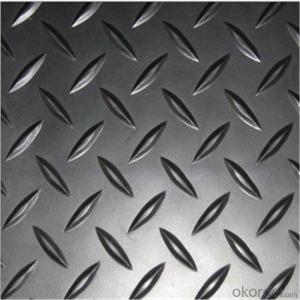5x10 Aluminum Diamond Plate
5x10 Aluminum Diamond Plate Related Searches
Led Light Bulbs For Ceiling Fixtures Led Lamps For Ceiling 42 In Ceiling Fan With Light Aluminum Coil Stock For Gutters Aluminum Foil For The Grill Hole Saw For Aluminum Plate Aluminum Tread Plate For Trailer Bow Plate For Aluminum Boat Aluminum Foil For Grow Room Aluminum Foil For Joint PainHot Searches
Stock Price For Aluminum Aluminum Coil Stock For Sale Aluminum Gutter Coil For Sale Used Aluminum Scaffolding For Sale 1/4 Aluminum Plate For Sale Aluminum Bar Stock For Sale Aluminum Round Stock For Sale Aluminum Diamond Plate For Sale Aluminum Scaffolding For Sale Craigslist 6061 Aluminum Plate For Sale Aluminum Dock Plate For Sale 7075 Aluminum Plate For Sale Aluminum Tread Plate For Sale Aluminum Checker Plate For Sale Aluminum Plate For Sale Near Me Plate Aluminum For Sale Aluminum Plate For Sale Aluminum Square Stock For Sale Aluminum Flat Stock For Sale Billet Aluminum Stock For Sale5x10 Aluminum Diamond Plate Supplier & Manufacturer from China
Okorder.com is a professional 5x10 Aluminum Diamond Plate supplier & manufacturer, offers integrated one-stop services including real-time quoting and online cargo tracking. We are funded by CNBM Group, a Fortune 500 enterprise and the largest 5x10 Aluminum Diamond Plate firm in China.Hot Products
FAQ
- The fatigue limit of aluminum sheets is defined as the highest stress level that the material can withstand indefinitely under cyclic loading conditions without experiencing fatigue failure. When compared to other materials, aluminum exhibits a relatively elevated fatigue limit, allowing it to endure a considerable number of load cycles before fatigue failure sets in. Nevertheless, it is crucial to acknowledge that the fatigue limit of aluminum sheets is subject to variation depending on factors such as alloy composition, heat treatment, and surface conditions. Therefore, it becomes essential to take these factors into account and perform appropriate testing in order to ascertain the precise fatigue limit of a specific aluminum sheet.
- Aluminum sheets can typically be purchased in both small quantities and in bulk. While it may depend on the specific supplier or retailer, many offer aluminum sheets in various sizes and quantities to meet the diverse needs of customers. Whether you require a few sheets for a small project or a larger quantity for industrial purposes, it is worth exploring different suppliers to find the option that best suits your requirements.
- 4.0mm five bars, aluminum plate, 4 aluminum plate, one ton, how many square?
- The square and the thickness are multiplied, and then multiplied by the density is the weight, and then by weight conversion on it
- Yes, aluminum sheets can be used for insulation purposes. They have a low thermal conductivity and can effectively reflect heat and cold, making them suitable for insulating applications in various industries such as construction, automotive, and packaging.
- What's the difference between 6061 aluminum plate, 7075 aluminium plate and 6063 aluminum plate?
- Simply put, 6061 and 6063 belong to the 6 series, 6061 hardness in 90HB 6063 in 80HB, suitable for brazing, surface oxidation treatment is better, 7075 T6 hardness in 150HB, hardness is highestUsually 6061 and 6063 can be common
- Yes, aluminum sheets are suitable for wastewater treatment applications. Aluminum is highly resistant to corrosion and can withstand harsh chemicals commonly found in wastewater. Additionally, aluminum sheets can be easily formed into various shapes and sizes, making them suitable for use in tanks, pipes, and other wastewater treatment equipment.
- Aluminum sheet is indeed suitable for architectural purposes, thanks to its impressive strength, durability, and resistance to corrosion. It is widely utilized in the construction field for various architectural applications such as cladding, roofing, and facades. Architects and designers can select aluminum sheets in different thicknesses to meet their specific aesthetic and functional requirements. These sheets can be easily shaped, bent, and formed to create distinctive architectural elements like panels, screens, louvers, and decorative features. Moreover, aluminum sheets can be coated or finished to enhance their appearance and protect them from environmental factors. Techniques such as anodizing, powder coating, or painting can be employed to improve the material's resilience against weathering, UV radiation, and pollution. Due to its lightweight nature, aluminum is favored for architectural applications as it reduces the overall weight of the structure and facilitates convenient installation. Additionally, aluminum is an environmentally friendly option for architectural projects as it can be recycled infinitely, thus promoting sustainability. To summarize, aluminum sheets are a highly viable and popular choice for architectural purposes because of their strength, versatility, durability, and aesthetic appeal.














































